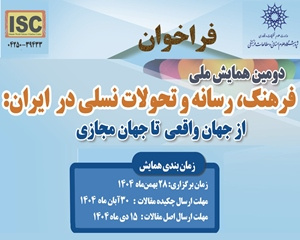تاریخ گذاری سندی روایات «ناسخ و منسوخ در قرآن» (مقاله علمی وزارت علوم)
درجه علمی: نشریه علمی (وزارت علوم)
آرشیو
چکیده
مسئله نسخ در قرآن در زمره دانش هایی است که از دیرباز در علوم مختلف اسلامی مورد توجه اندیشمندان مسلمان بوده و دیدگاه های متفاوت و گاه ضد و نقیضی درباره آن مطرح شده است. از آنجا که روایات، منشأ بسیاری از این اختلاف دیدگاه ها در اندیشه نسخ بوده است، پژوهش حاضر به بررسی اعتبار تاریخی اسناد این دست از روایات می پردازد. بدین منظور، پس از جمع آوری روایاتی که حاکی از نسخ آیه ای از قرآن است، با استفاده از روش های تاریخ گذاری حدیث برپایه حلقه مشترک، اسناد روایات را مورد بررسی و تحلیل قرار داده، تا به این سؤال اساسی پاسخ داده شود که این روایات در چه زمان و مکانی و توسط چه کسانی انتشار یافته است. نتایج حاصل از این پژوهش نشان می دهد که قتاده، سدی، حسین بن واقد، حجاج بن محمد و ابو صالح از چهره های شاخص نسخ به شمار می آیند و مبدأ گسترش روایات، قرن دوم هجری در بصره و کوفه بوده است.Dating Asnad of Abrogating and Abrogated Narrations in the Qur’an
The issue of abrogation ( naskh ) in the Qur'an is a knowledge that has long been considered by Muslim scholars in various Islamic sciences, so that different and sometimes contradictory views have been expressed about it. Since the narrations ( hadiths ) are the origin of most different opinions on abrogation, this research examines the historical validity of Asnad of the narrations. Accordingly, collecting the narrations that indicate the abrogation of a Qur’anic verse and using the method of dating hadith based on the common link, it analyzed the Asnad of these narrations to answer the main question of research that “when, where, and by whom were these narrations spread?” The result shows that Qatāda, Suddī, Ḥussein b. Wāqid, Ḥajjāj bin Muhammad, and Abū Sāliḥ are among the key figures of naskh who are remarked as the origin of the spread of narrations in the second century AH in Basra and Kūfa.



